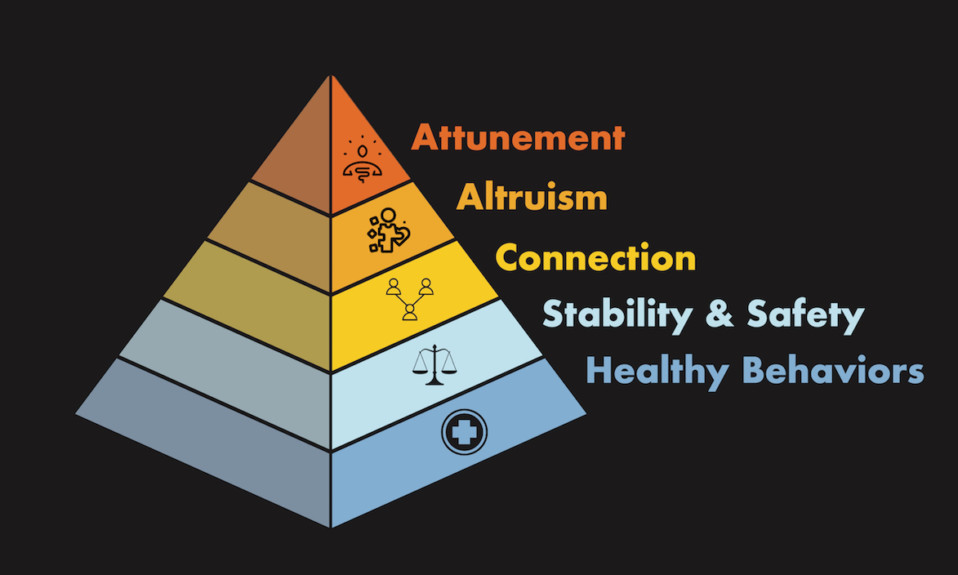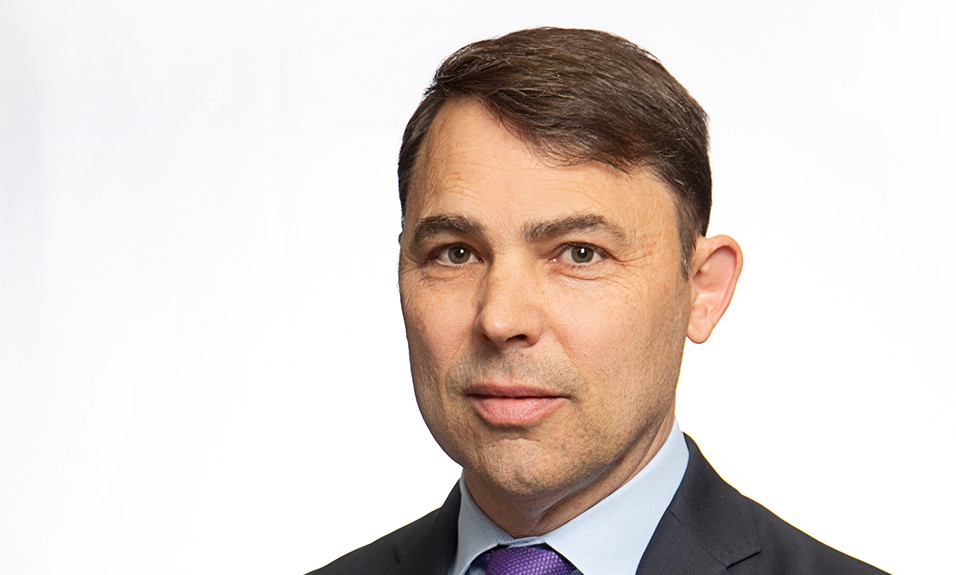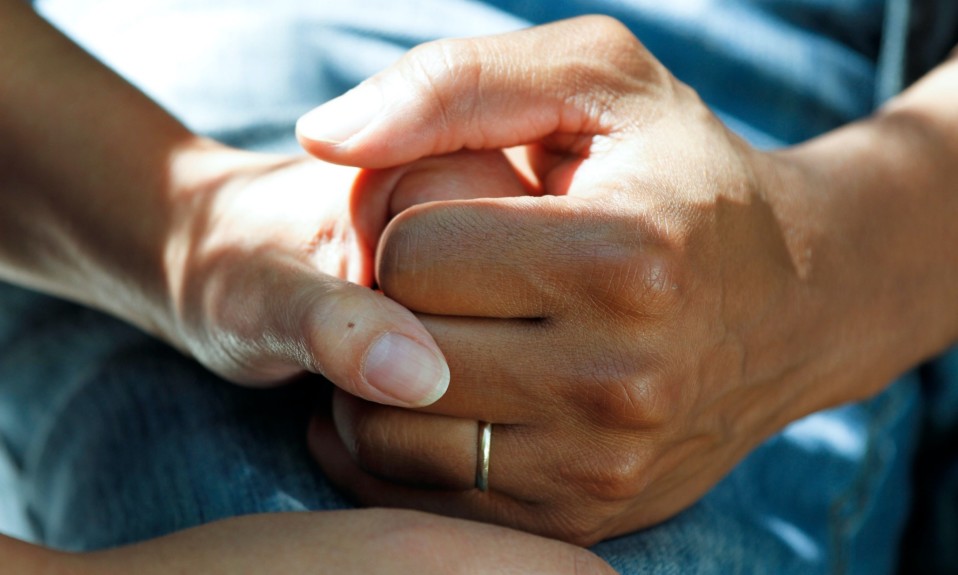There are five key areas that play into healing from addiction
By Ryan Blackstock, PsyD
In a previous article, I spoke about an inverted pyramid of addiction, and how the consequences of addiction take a toll across five areas of psycho-social-spiritual functioning. Here I’ll look in a similar manner at the recovery process. As with the inverted pyramid, this too is based on Maslow’s Hierarchy of Needs, but focuses on tasks specific to developing and sustaining a healthy recovery process.
Healthy Behaviors
At the base of the Pyramid of Recovery is a category simply called Healthy Behaviors. This focuses on three key areas for the person new to recovery: diet, sleep and medical health.
Addiction naturally changes one’s diet—you might be abstaining from food because of stimulants, or drinking your meals, or binge-eating while high. Part of the stabilization process is to assess if you are eating and hydrating adequately. I recently performed a virtual consult for a woman early in recovery, and she complained about her mood, and about swings in energy and motivation. During the 25-minute consultation, she had consumed two large cups of coffee and a candy bar, and was in the process of eating cookies. It was clear she wasn’t mindful of her eating behavior. So we were able to talk in an informative way about the relationship between high amounts of caffeine and sugar and her moods and energy levels. People often just take eating for granted, but it’s an area that deserves attention in terms of creating a baseline for adequate nutrition, and to see if any remnants of addictive behavior are being turned towards food or beverages—coffee, energy drinks, etc.
The second area to address for healthy behaviors is sleep. Alcohol and drug use affect sleep cycles and quality of sleep. A client once explained it like this: “I was a daily drinker, and what I came to learn was that I didn’t go to sleep and wake up. I had a schedule of passing out and coming to. And I realized when I got sober after all those years, I didn’t know how to go to sleep.” The using life is often erratic, and so sleep cycles are as well. Developing a sleep ritual can be very helpful in early recovery. To promote balance, it’s crucially important to get adequate rest, particularly for relapse prevention. If you’re fatigued, you’re just not at the top of your game for recovery, and that can often lead to poor and impulsive decisions. Just as we take eating for granted, many people also ignore their sleep regimen, and that’s why it’s here at the base of the pyramid. It’s an important factor for everybody.

The third aspect of healthy behavior is one’s medical condition. Often during the course of addiction, checkups and procedures get ignored. Among the many reasons are fear that blood work will reveal use, having to cease use for a period of time to receive medical care, and shame or embarrassment. So part of the task in early recovery is to ask the simple question: How is my body doing? If you went through detox in a facility, you probably received a basic medical history and physical, but for those who didn’t, their physical health is often an unknown variable. In this area, I talk to clients about their primary care physician, and tell them that if they want to stay in treatment, it’s important to let their doctor know they’re in recovery. That is about establishing an honest relationship with the PCP. If that practitioner happens to be an addictionologist, great—but in any event it’s important to provide them with information, if only so that they’ll pay closer attention to lab results.
Safety and Stability
The second tier in the pyramid of recovery has to do with Safety and Stability. Both of these elements are traditionally upended by addiction, so this tier also has a few levels to it.
The most basic shift is the cessation of use, because all substance use carries inherent risk. But beyond mere abstinence, these changes are about looking at the risk levels of behaviors that may have become habituated.”
Active addiction and risky behaviors go hand in hand. For some this may mean overt illegal and dangerous behavior, while for others the risks can be more subtle—like the secrecy and deceit that, if uncovered, erode trust even in the strongest of relationships. At this point, it’s time to shift behaviors to promote a sense of balance and stability.
The most basic shift is the cessation of use, because all substance use carries inherent risk. But beyond mere abstinence, these changes are about looking at the risk levels of behaviors that may have become habituated. I often ask my clients to rate their behaviors using a risk scale of GREEN, YELLOW or RED. For example, how would they rate the risk of going to the house of a family member where they know that people will be actively using? We talk about these risk levels and how to mitigate them.
That doesn’t always mean sheer avoidance, though. An example: I had a client who explained to me that for his career it was important to attend a regular event hosted by his boss—one that typically involved heavy drinking, which in previous years my client participated in. The festivities would start outside as a picnic, and eventually people would be invited onto the boss’s boat to continue the party. Not going wasn’t an option, the client told me, because attendance at this party was a silent hoop that staffers had to jump through to be considered for promotion. So we had to come up with a plan where he could attend and be seen, but not relapse.
As we discussed risk, we determined that the presence of alcohol and of other drinkers who weren’t aware that my client was now in recovery put the event at YELLOW, and we decided that getting on the boat would be RED. The plan we crafted was that the client would bring a cooler of ice and soft drinks and show up early, when families would be there and alcohol consumption would be minimal. We also decided that he would contact his sponsor, whom he would inform of the plan. And we established that he would excuse himself early, when other families were leaving, and then head to a 12-step meeting afterward. Finally, by no means would he get on the boat. The client followed the plan, and a few months later he received a promotion.
A key to this strategy is that you must have a good reason to go into a YELLOW situation. This is where sponsors, therapists and others in recovery can help—which leads us to the second part of this section: stability.
I see recovery as a lifestyle, and a lifestyle is made up of consistent habits. To develop stability in early recovery, I’m in the camp that recommends consistent attendance at 12-step or other recovery meetings. Stability begins to form when you hear messages of hope from others, when you start to get “known” or recognized as a regular member, when you build relationships with other recovering people, and when you dedicate yourself to the cause of recovery alongside others.
Stability also means keeping your word, getting home when you say you will, keeping promises (there are so many broken promises in active addiction), showing up to work on time, etc. Part of stability can be simply driving the speed limit, saving money (and often appointing someone to help you manage your finances) and engaging in the types of healthy behaviors we discussed in the first section. This lays the foundation for the recovering lifestyle.
Connection
The next tier on the pyramid, Connection, is a mix of learning new/sober ways of having relationships and mending some of the important relationships that were damaged by addiction. In the previous stage, we focus on getting consistent exposure at healthy meetings and being around people who can be role models of recovery. Part of the process of consistently attending a recovery meeting is that you should like going to it, and I contend that if it feels like you’re in the best meeting going on at that time, you’re in the right place. Now the task is to make meaningful connections with others. Sometimes this can come in the form of simple service work—arriving early and helping make coffee, setting up the chairs, reading excerpts such as the preamble or the 12 steps, etc. This builds your connection to the program, to the blueprint of recovery.

I would also say that no program of change is successful without other people to make it happen. Increasing connections with others often means acquiring a sponsor, sitting together with folks who are “regulars” at the meetings, and showing vulnerability in sharing where you are and what you worry about. As you’re doing that, pay attention to who listens to you, and who speaks from their own experience—that’s the start of a connection. At the beginning of the process, it’s common to think that you are only taking and taking. You might even say to yourself, Who would want to hear about my problems this week? But when you put yourself out there, you allow others to reflect on their own recovery and to give. In time, you’ll do this as well. This is a dyad of recovery.
Along with building connections with new people comes mending relationships with those you’ve known. Some connections are slower to heal than others. Ironically, family is often the last group of connections to heal, because there’s typically been so much damage and loss of trust. It’s easy to get frustrated on this point, but the mantra I use is, “You didn’t get sick overnight, so you aren’t going to get well overnight.” Stability plus conscious effort tends to grow connection. Steps 5 through 10 of the 12 steps focus on this quite a bit. A recovering person must be able to work through the damage of the past and allow others their own timeframe to do the same. One motivating factor for many clients is to be a sober parent to their children, and to want their children to have memories based in health, love and connection, rather than in the turbulence of addiction and the damage it wreaks. Healthy connections early on might come in the form of friendships that are not based on using, and that arise from appreciation of the other and mutual respect. It’s important to note that the connection phase is ongoing.
Altruism
The fourth stage of the pyramid is what I call Altruism. This level also encapsulates the many developing and healing relationships in one’s recovery. With time and hard work, new people in recovery begin to find that they have something to contribute to others. They find themselves on the other side of that dyad I mentioned earlier, in that they’re giving naturally. And often when we are able to give, we feel good. We don’t attach ourselves to any results—we just pay it forward.
As a point of encouragement for those new to the process, you don’t need years and decades of recovery to make meaningful contributions. In fact, sometimes it’s the person who’s only a few months ahead in the process who can make a great impact, because they feel more relatable in terms of where they are in recovery.
A lot of recovery is about taking personal responsibility for your actions and your growth. It’s about being a good neighbor and co-worker, about carrying yourself with respect and engaging others in a healthy way.”
Crucially, I believe that altruism must also take place outside of the recovering community. If recovery is a lifestyle, then this aspect must occur throughout our lives. I have said for many years that anyone can look good in a meeting for an hour, but it’s what you do with the other 23 hours that makes the difference. Carrying the message is important, but that’s not the only way we can be helpful in the world. Can we take the lessons from recovery and help others, including non-alcoholics/addicts? A lot of recovery is about taking personal responsibility for your actions and your growth. It’s about being a good neighbor and co-worker, about carrying yourself with respect and engaging others in a healthy way. The key is that you don’t do it for a pat on the back or some kind of social praise. One exercise I give clients in this phase is to do something kind for someone anonymously during the week—and if they get caught or get credit for it, it doesn’t count.
Attunement
At the top of the Pyramid of Recovery is the phase I call Attunement. There are lots of synonyms for this idea. Some may call it being spiritually centered. The AA basic text refers to it as “God-consciousness.” Humanistic psychology and Maslow would call it a self-actualization process. And in the U.S. Army, it’s “Be All You Can Be.” When I say spirituality, for many people this means some kind of ongoing connection and practice with a Higher Power, and that may be the easiest way to conceive of attunement. But for those who find these ideas too religious-leaning, I could just as easily characterize this stage as living fully up to our values in all aspects of our lives, as best we can. At the core, a spiritual system is one in which I’m in touch with a sense of meaning and purpose, applying that to myself inwardly, and expressing it outwardly, with others.

The attunement phase builds throughout recovery. It’s not a destination but a process, through which you find yourself and live according to those discoveries and values. In the 12-step philosophy, this likely happens around and after step 12, but it’s important to note that this is in constant development throughout even the earliest stages.
It is easy to view attunement as this blissful place that is the result of recovery, but often it’s difficult, too. Sometimes attunement results in ending toxic relationships, or making a career change that may mean less income but more purpose. It can involve gaining an awareness that there are more layers of the onion to work on, perhaps related to earlier life trauma or to challenging family dynamics. The key is that the framework and lifestyle have been set, and those supports allow these new changes to take place.
Attunement can feel good, too. Most clients I’ve worked with long-term describe it essentially as really liking that person they see in the mirror, and finally having the life they always wanted. Yes, there will continue to be problems, but they have the skills and capacities to handle them and continue to flourish in their recovery.
My hope in writing this model is that it helps frame some of the basic phases and tasks in building a lifestyle of recovery. The important part is that you are working on all these areas—just realize that early on much more effort is placed in the bottom tiers to set the foundation that you can successfully build upon. I’d love to hear your comments and questions. Feel free to reach out to me at DrBlackstockRecovery@gmail.com.
Ryan Blackstock, Psy.D., received his doctorate of psychology from the Center for Humanistic Studies in 2006 and has worked as an addiction counselor since the early 1990s. He earned a distinguished service award from the National Kidney Foundation (Michigan chapter) for pioneering a substance abuse education program for people awaiting organ transplant. Blackstock teaches in the Michigan School of Psychology master’s program. In his free time, he enjoys game design, playing heavy metal and studying symbolic aspects of ancient Egypt.
Illustration: Darya Daneshmand; top photo: Ashley Byrd; middle photo: Simi Iluyomade; bottom photo: Le Minh Phuong














